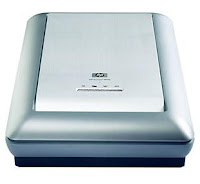Here's an explanation on some file types:
GIF files:This is one of the most common image format. It encodes static bitmap images. In a bitmap image, the image file has to define the exact color of every pixel in the image. In a GIF image, the number of colors is reduced to 256 and then "runs" of same-color pixels are encoded in a color + number-Of-Pixels format. This makes a GIF file great for storing drawings that have lots of same-color pixels.
JPEG files:This file is, like the GIF format, the most commonly used image format. It uses more complex techniques to compress images, where the colour of every pixel is different.
Animated GIF files:An animated GIF file is a number of GIF files bonded together and displayed one after another. However, the size of the file is the sum of the GIF files used to create the sequence, and that can add up quickly.
MPEG files:An MPEG file is like a JPEG file: it uses a complex algorithm like a JPEG file does, trying to eliminate repetition between frames to significantly compress video information. In addition it allows a soundtrack. Because a typical sequence has hundreds or thousands of frames, file sizes can still get quite large.
Shockwave files:Shockwave files provides a vector-based animation capability. Instead of specifying the color of every pixel, a Shockwave file specifies the coordinates of shapes as well as the color of each shape. Shockwave files can be extremely small. They also provide soundtracks and animation. Because they are vector-based, you can enlarge the image and it will still look great.
What is a vector based image and how is it different to a bitmap based image?Vector images are mathematically-based. All lines, shapes, etc. of a vector-based image are independent of one another.
Vector-based images are usually created and edited in "draw" or "illustrate" programs such as Adobe Illustrator. They have smooth edges and create curves or shapes. Vector-based images are good for precise illustrations, but are not as good for photorealistic images. They are easily scalable, due to their use of mathematic formulas.
Bitmap images, also referred to as raster images, are pixel-based. This means that location and color information about the image is stored in individual pixels within a grid.The information stored in a bitmap image regarding pixel location and color is what forms the image. Bitmap images are edited at the pixel level; in other words, the color of any one pixel can be changed.



